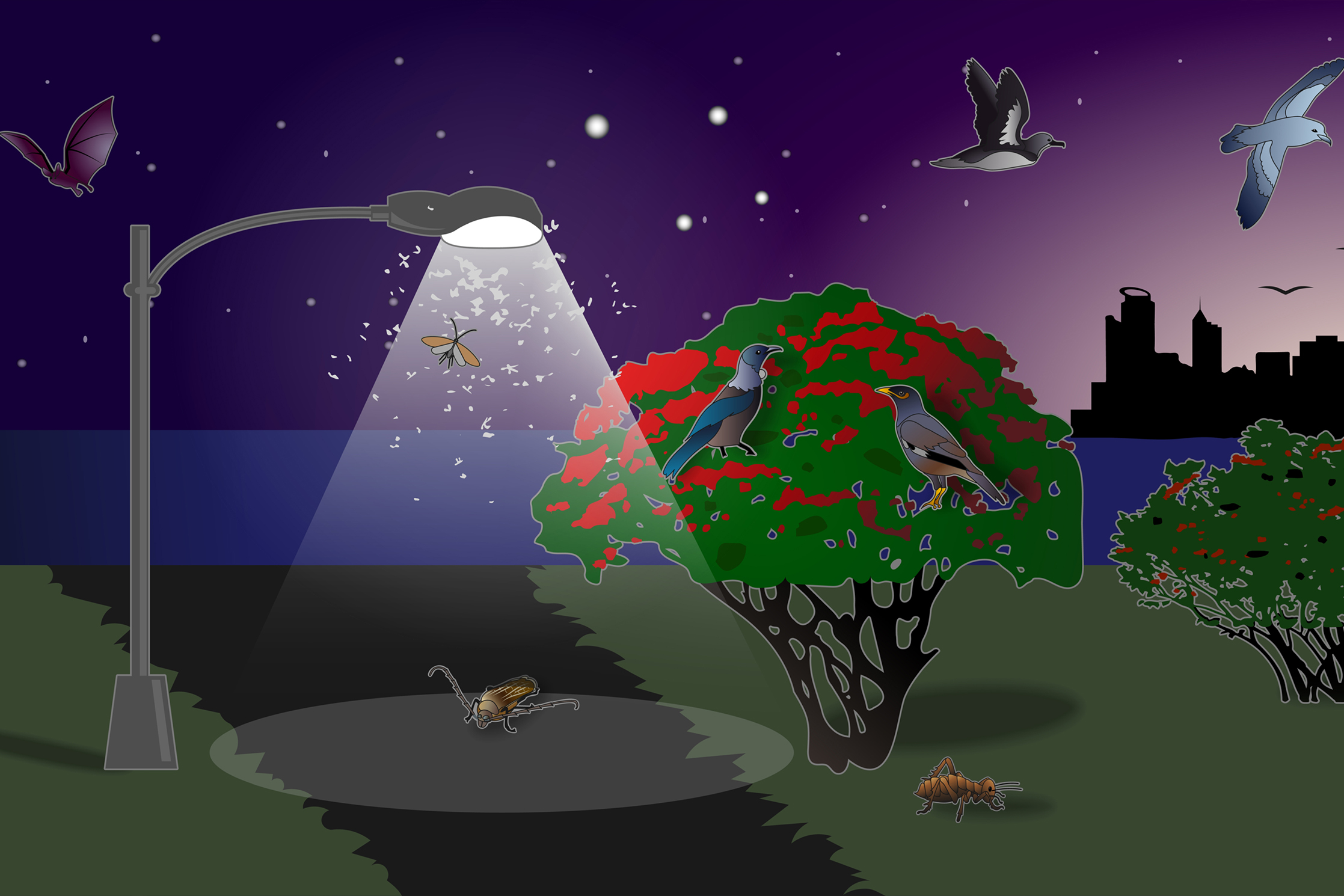A ‘glow-maggedon’ for native wildlife

According to the latest study(external link) by NMIT researchers Drs Ellen Cieraad and Bridgette Farnworth, the night-time light environment across the motu is changing at an alarming rate.
Between 2012 and 2021, lit surface area in New Zealand increased by 37 per cent to more than 11000 square kilometres, and over 4500 square metres of the country experienced a brightness increase of 87 per cent.
“The rate at which New Zealand is brightening is faster than the global average,” says Ellen.
Unfortunately, these satellite imagery estimates do not capture sky glow, nor the full extent of the light spectrum, so are underestimates. The real change, she says, will likely be much more.
Extra illumination after-hours allows us to extend our activities into the evening, but the addition of light at night is not good news for nocturnal wildlife that rely on dark places to survive - a concern highlighted by research co-author Dr Bridgette Farnworth.
“We have very little information on how light pollution affects our native animals,” Bridgette says.
A recent publication in the (external link)New Zealand Journal of Ecology(external link) by Ellen and Bridgette lists bats, wētā and seabirds as species that could be harmed by excessive lighting but emphasises there are minor changes that could reduce the impact.
“Small changes to wavelength, timing or lighting intensity could play a key role in mitigating the impacts on our dusk-dwelling animals,” says Bridgette.
Other global drivers of biodiversity change, such as air, soil and plastic pollution or deforestation, are much harder to reduce. Comparatively, reducing light pollution is relatively easy.
“It’s as easy as flicking the switch or turning the dimmer,” Ellen says.
With increased awareness on a local scale and the introduction of technology that keeps the impact of ALAN in mind, helping to halt the loss of New Zealand’s dark sky cloak could be just a flick of a switch away.
Dr Ellen Cieraad is a research professor with NMIT and Dr Bridgette Farnworth is hosted by NMIT as a Rutherford Postdoctoral Fellow, funded by the Royal Society. For more information about research at NMIT, visit our website.(external link)
Read their article, Lighting trends reveal state of the dark sky cloak: light at night and its ecological impacts in Aotearoa New Zealand(external link), in the New Zealand Journal of Ecology.

